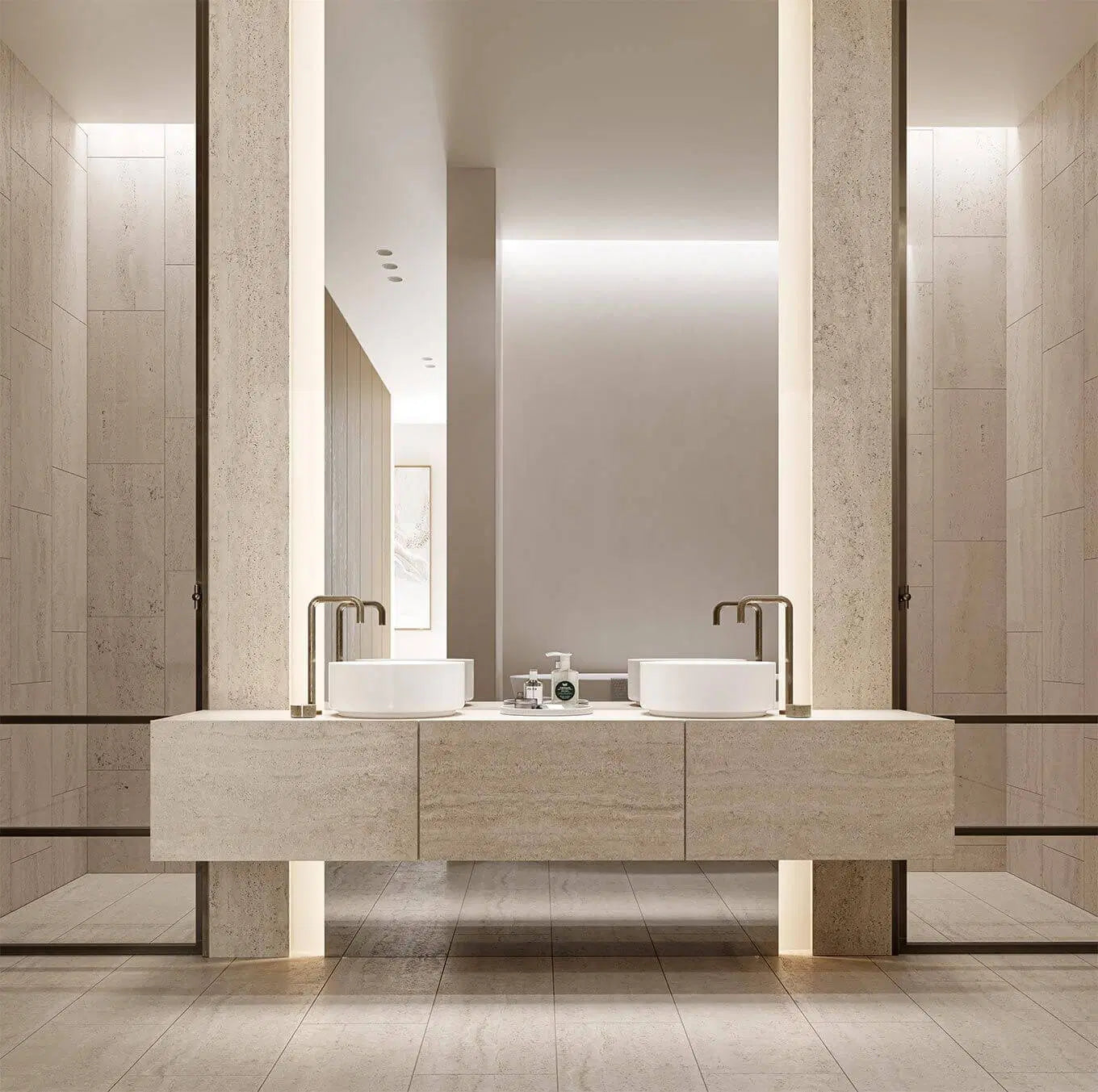General information travertine
Travertine, or travertine, is found in Turkey and Italy's Tivoli and Tuscany. It is a freshwater limestone with a layered structure, formed by large amounts of lime in hot springs. This structure is created because the lime precipitates in the water and creates a new layer each time. During this process, leaves and twigs fall between the layers and, after they have been digested, leave irregular holes in this material. The fewer holes, the better the quality. Depending on the purpose of use, the holes are sometimes filled to improve the porous properties.
The characteristic holes in travertine are also called pores and do not detract from the durability of the freshwater limestone. However, they are the reason why this material has a coarser look and feel than its natural stone 'brother' marble.
The new trend Travertine
After marble and terrazzo, natural stone travertine is now making a comeback. Logical timing, because thanks to its soft and warm appearance, travertine fits perfectly into the current trend: the use of natural materials. The velvety appearance of the natural stone tiles provides a calm, luxurious base and is an ideal starting point for a natural color palette. The light beige color gives your interior an authentic look and also forms a good basis for many different interior styles. By the way, travertine not only comes in beige tones, but its color can vary from cream and light beige to yellow, brown, orange and even red. We will tell you more about this timeless material and show you how to apply this trend in your interior.
Where is the origin?
An important site of travertine is the town of Tivoli east of Rome.
Travertine is formed when the CO2 content in the water decreases (for example due to a rise in temperature) and lime precipitates.
In nature, travertine occurs in hot springs and geysers, such as Mammoth Hot Springs in Yellowstone and Pamukkale in Turkey.
Travertine in monument buildings
Travertine has been used as a building material for many centuries, for example in floors, wall coverings, stairs and sculpture. The Colosseum in Rome is partly constructed from travertine. The Sacré-Cœur in Paris is made entirely of travertine.
In the Netherlands, the National Monument on Dam Square in Amsterdam is constructed from travertine. It was completely dismantled at the end of the twentieth century and parts of it, such as the statues, the lions and the top covering of the needle, were impregnated with acrylic resin in Germany. The type of stone has proven to be insufficiently weather-resistant in the Dutch climate.
Travertine as home accessories in the home
Travertine, like marble and terrazzo, is popular as a finish for bathrooms and kitchen countertops, or as a cladding for natural stone floors and walls. But home accessories and furniture made of this material also made a comeback in the '20s. Think of a minimalist TV cabinet in an interior with Japanese or Scandinavian influences, or a dining table as an eye-catcher in a Mid-Century inspired interior. In any case, one thing is certain: because travertine lends itself to so many different living styles, it will be a timeless gem in your interior. From the hall and the bathroom, to the kitchen and the terrace... travertine really fits everywhere, both indoors and outdoors.

0 comments